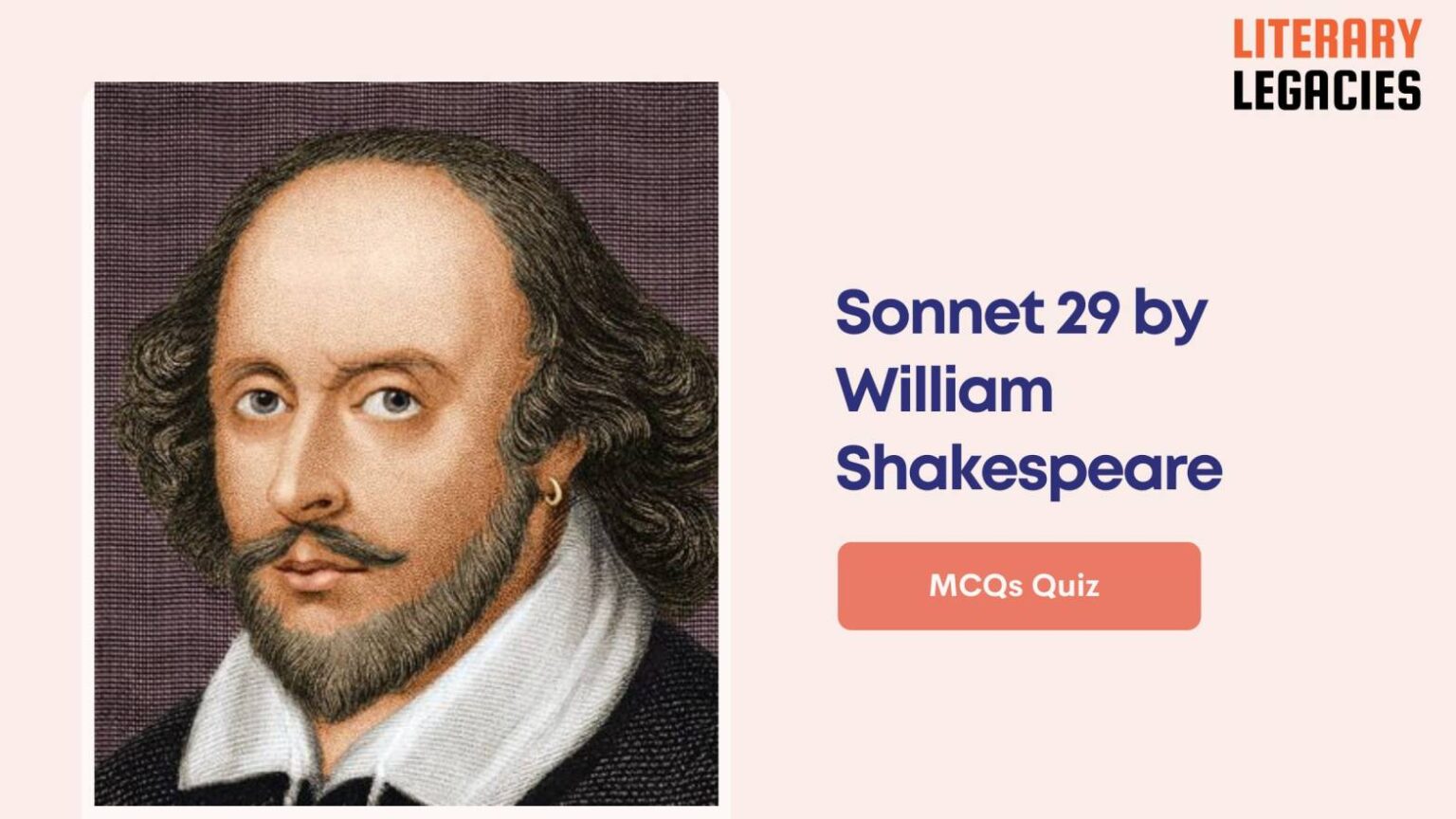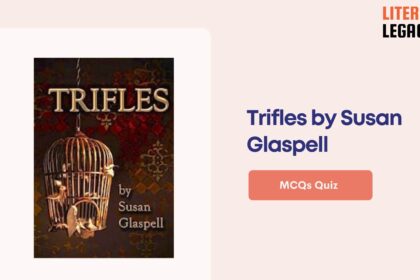1. What is the typical structure of a Shakespearean sonnet?
A. Two quatrains and two final couplets
B. Four quatrains and no final couplet
C. One quatrain and three final couplets
D. Three quatrains and one final couplet
Answer: Three quatrains and one final couplet (D)
Shakespearean sonnets have a specific structure that helps to convey the poet’s message.
2. What is the primary function of the first portion of a Shakespearean sonnet?
A. To pose a question or express a problem
B. To describe a beautiful scene
C. To express gratitude and happiness
D. To introduce a new character
Answer: To pose a question or express a problem (A)
Understanding the function of each part of the sonnet helps to uncover its meaning.
3. What is the speaker’s emotional state at the beginning of the poem?
A. Enthusiastic and optimistic
B. Indifferent and neutral
C. Despairing and isolated
D. Grateful and hopeful
Answer: Despairing and isolated (C)
The speaker’s initial emotional state is one of despair and loneliness.
4. What is the significance of the lark in the poem?
A. It is a symbol of the speaker’s wealth and status
B. It is a metaphor for the speaker’s beloved
C. It symbolizes the speaker’s newfound hope and freedom
D. It represents the speaker’s despair and loneliness
Answer: It symbolizes the speaker’s newfound hope and freedom (C)
The lark symbolizes the speaker’s newfound hope and freedom, as it freely soars into the sky.
5. What is the speaker’s emotional state in the first quatrain of ‘Sonnet 29’?
A. Hopeful and content
B. Unhappy and lonely
C. Angry and frustrated
D. Excited and anxious
Answer: Unhappy and lonely (B)
The speaker’s emotions in the first quatrain set the tone for the rest of the poem.
6. What is the significance of the word ‘yet’ in the third quatrain of ‘Sonnet 29’?
A. It concludes the poem abruptly
B. It emphasizes the speaker’s unhappiness
C. It introduces a new character
D. It indicates a shift in thought and tone
Answer: It indicates a shift in thought and tone (D)
The transition word ‘yet’ marks a significant change in the speaker’s attitude.
7. What is the purpose of the volta in the poem?
A. To conclude the poem
B. To provide a summary of the poem
C. To introduce a new character
D. To mark a shift in tone or idea
Answer: To mark a shift in tone or idea (D)
The volta marks a shift in tone or idea within the poem, from despair to gratitude.
8. What is the symbolic meaning of the lark in ‘Sonnet 29’?
A. It symbolizes hope and joy
B. It represents despair and hopelessness
C. It signifies the speaker’s wealth and status
D. It represents the speaker’s lost love
Answer: It symbolizes hope and joy (A)
The lark is a powerful symbol that helps to convey the speaker’s message.
9. What is the significance of the word ‘yet’ in line 9?
A. It introduces a new idea
B. It is a transitional word
C. It concludes the poem
D. It signals a change in tone from despair to gratitude
Answer: It signals a change in tone from despair to gratitude (D)
The word ‘yet’ signals a shift in tone from despair to gratitude, marking the volta.
10. What is the speaker’s attitude towards his beloved?
A. Grateful
B. Angry
C. Sad
D. Indifferent
Answer: Grateful (A)
The speaker is grateful for his beloved and the love they share.
11. What is the central theme of ‘Sonnet 29’?
A. The power of friendship and relationships
B. The speaker’s unhappiness with their life and finding gratitude
C. The importance of wealth and status
D. The beauty of nature and the environment
Answer: The speaker’s unhappiness with their life and finding gratitude (B)
Understanding the central theme helps to uncover the underlying meaning of the poem.
12. How does the speaker feel about their life in the first two quatrains of ‘Sonnet 29’?
A. They are hopeful and optimistic
B. They are unhappy and feel alone
C. They are grateful and content
D. They are angry and resentful
Answer: They are unhappy and feel alone (B)
The speaker’s feelings in the first two quatrains contrast with their later attitude.
13. What does the speaker’s ‘wealth’ refer to in line 13?
A. The love of his beloved
B. His royal status
C. His inner strength
D. Material wealth
Answer: The love of his beloved (A)
The speaker’s ‘wealth’ refers to the love of his beloved, which is more valuable than material wealth.
14. What is the effect of the speaker’s thoughts of his beloved?
A. It has no impact on his emotional state
B. It decreases his feelings of hope
C. It increases his feelings of despair
D. It raises his spirits and makes him feel luckier
Answer: It raises his spirits and makes him feel luckier (D)
The mere thought of the beloved is enough to raise the speaker’s spirits and make him feel luckier.
15. What is the tone of the final two lines of ‘Sonnet 29’?
A. Sad and melancholic
B. Hopeful and uncertain
C. Grateful and content
D. Angry and bitter
Answer: Grateful and content (C)
The final two lines convey the speaker’s ultimate message.
16. What is the significance of the final couplet?
A. It is a summary of the poem
B. It concludes the poem with a sense of despair
C. It emphasizes the speaker’s awareness of his ‘wealth’ and gratitude
D. It marks a shift in tone from gratitude to hope
Answer: It emphasizes the speaker’s awareness of his ‘wealth’ and gratitude (C)
The final couplet emphasizes the speaker’s awareness of his ‘wealth’ and gratitude, unifying his feelings of hope and gratitude.
17. What is the purpose of the ‘deaf heaven’ imagery in ‘Sonnet 29’?
A. To emphasize the speaker’s happiness
B. To introduce a new theme
C. To conclude the poem abruptly
D. To express the speaker’s isolation and loneliness
Answer: To express the speaker’s isolation and loneliness (D)
The ‘deaf heaven’ imagery helps to convey the speaker’s emotional state.
18. What is the theme of the poem?
A. The impact of love on one’s mindset
B. The significance of material wealth
C. The importance of social status
D. The power of money to bring happiness
Answer: The impact of love on one’s mindset (A)
The poem explores the theme of the power of love to change one’s mindset and overcome feelings of isolation and despair.
19. What is the ultimate message of ‘Sonnet 29’?
A. That the speaker is bitter and resentful
B. That wealth and status are the most important things in life
C. That the speaker is unhappy and alone
D. That the love shared with the beloved is enough wealth
Answer: That the love shared with the beloved is enough wealth (D)
The ultimate message of the poem is a powerful and meaningful one.
20. What is the tone of the poem at the end?
A. Despairing and hopeless
B. Grateful and hopeful
C. Angry and frustrated
D. Indifferent and neutral
Answer: Grateful and hopeful (B)
The tone of the poem at the end is grateful and hopeful, as the speaker has found a source of happiness in his beloved.
21. What is the speaker’s primary emotion in the first quatrain of the poem?
A. Despair
B. Jealousy
C. Gratitude
D. Hope
Answer: Despair (A)
The speaker’s emotions shift throughout the poem.
22. What is the result of the speaker’s feelings of despair?
A. He becomes wealthy and famous.
B. He becomes content with his life.
C. He is unable to see the positive aspects of life.
D. He becomes more religious.
Answer: He is unable to see the positive aspects of life. (C)
The speaker’s emotions have a profound impact on his perspective.
23. What does the speaker desire to have in the second quatrain?
A. The ability to fly like a bird.
B. A sense of hope and friendship.
C. A large amount of wealth.
D. A group of friends.
Answer: A sense of hope and friendship. (B)
The speaker’s desires are reflective of his emotional state.
24. What is the effect of the speaker’s thoughts of love?
A. He becomes more depressed.
B. He becomes angry with heaven.
C. He becomes more jealous.
D. His perspective on life shifts.
Answer: His perspective on life shifts. (D)
The speaker’s thoughts have a profound impact on his emotions.
25. What is the significance of the lark in the poem?
A. It is a symbol of despair.
B. It is a symbol of sorrow.
C. It is a symbol of hope and love.
D. It is a symbol of wealth and status.
Answer: It is a symbol of hope and love. (C)
The lark is a key symbol in the poem.
26. How does the speaker feel about his life at the beginning of the poem?
A. He is hopeful for the future.
B. He is unhappy and feels cursed.
C. He is content and grateful.
D. He is jealous of others.
Answer: He is unhappy and feels cursed. (B)
The speaker’s emotions are central to the poem.
27. What is the tone of the poem in the final two lines?
A. Resigned and defeated.
B. Joyful and grateful.
C. Jealous and angry.
D. Despairing and hopeless.
Answer: Joyful and grateful. (B)
The tone of the poem shifts significantly in the final lines.
28. What is the speaker’s attitude towards his own fate?
A. He is angry with his fate.
B. He is grateful for his life.
C. He curses his fate.
D. He is resigned to his fate.
Answer: He curses his fate. (C)
The speaker’s attitude towards his fate is central to the poem.
29. What is the result of the speaker’s feelings of isolation?
A. He feels a heavy weight and is consumed by sorrow.
B. He becomes more grateful.
C. He becomes more confident.
D. He becomes more hopeful.
Answer: He feels a heavy weight and is consumed by sorrow. (A)
The speaker’s emotions have a profound impact on his life.
30. What is the central idea of the poem?
A. The importance of being friends with a king.
B. The significance of being rich in hope.
C. The power of love to overcome despair.
D. The power of wealth to overcome sorrow.
Answer: The power of love to overcome despair. (C)
The central idea of the poem is a powerful message.



